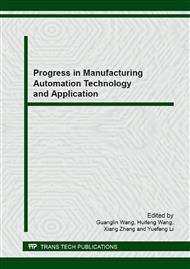p.706
p.711
p.719
p.725
p.732
p.740
p.745
p.749
p.754
Energy-Efficient Routing Protocol of Wireless Sensor Network for Industrial Application
Abstract:
An energy-efficient wireless sensor routing protocol (Energy-efficient clustering hierarchy routing protocol, EECH) for industrial field is proposed based on LEACH protocol according to the energy inefficiency of existing routing protocols and the characteristics of industrial field applications. The EECH protocol takes full advantages of the node clustering and time slot distribution in LEACH and implements the functions such as clustering, multi hop time slot distribution, node sleeping and data gathering. The cluster heads can be evenly distributed in the area with the geography location information of the wireless nodes, so that the optimal data gathering path can be established. Meanwhile, the EECH protocol can reduce the conflict in data receiving/transmitting and the energy consumption of the nodes, and extend the network lifetime through the multi hop time slot distribution and node sleep mechanism. The simulation results have shown that the death time of the first node in EECH protocol is extended double time than that of LEACH protocol. When most of the nodes dies, the amount of received data of the base station node is more than twice as much as the LEACH protocol, which has verified the energy efficiency characteristic of the EECH protocol.
Info:
Periodical:
Pages:
732-739
Citation:
Online since:
September 2013
Authors:
Price:
Сopyright:
© 2014 Trans Tech Publications Ltd. All Rights Reserved
Share:
Citation:


